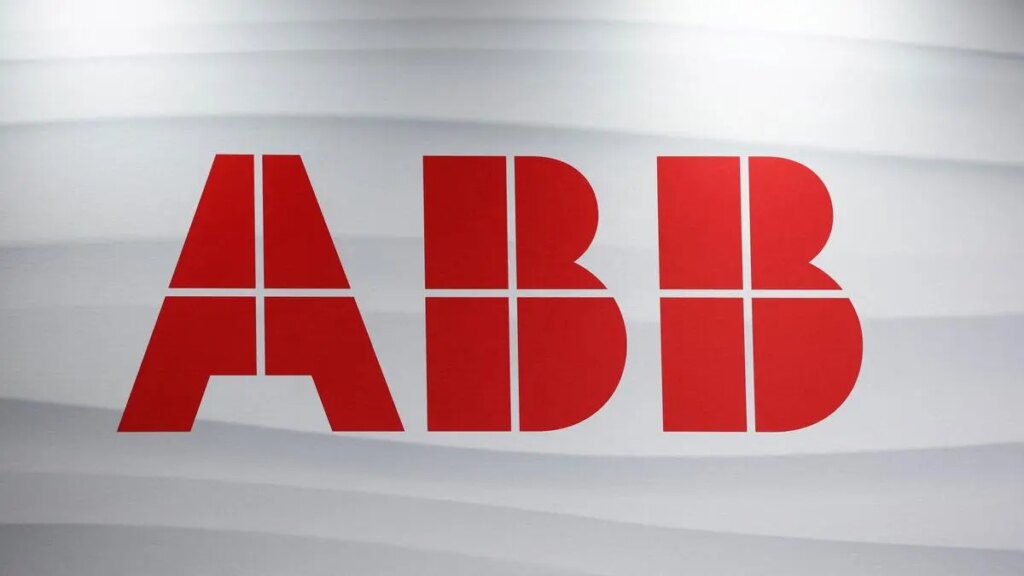
ABB Robotics Spinoff: Technology Giant Announces 2026 Division Separation
ABB Robotics Spinoff: Technology Giant Announces 2026 Division Separation
The ABB Robotics spinoff is expected to optimize value creation for both companies, enabling more focused growth and talent attraction. Photo: BENOIT TESSIER
Table of Contents
ABB Robotics Spinoff: The Announcement
ABB, the global technology leader in electrification and automation, has announced plans for an ABB Robotics spinoff that will create a separately listed company. The announcement, made on Thursday, outlines a proposal to separate its Robotics division through a spinoff that would be completed by the second quarter of 2026.
The ABB Robotics spinoff represents a significant strategic move for the industrial technology giant, which plans to present this proposal to shareholders at its Annual General Meeting in 2026. The intention is for the newly created entity, currently using the working name “ABB Robotics,” to begin trading as an independent company during Q2 2026.
This ABB Robotics spinoff follows a trend of large industrial conglomerates focusing their business portfolios and creating more specialized, agile entities that can better navigate increasingly competitive and rapidly evolving technology markets. The announcement signals ABB’s continued strategic evolution as it looks to optimize value creation for shareholders while maintaining focus on its core competencies.
Key Facts About the ABB Robotics Spinoff
- Announcement date: April 18, 2025
- Expected completion: Q2 2026
- Implementation method: Share distribution as dividend in-kind
- Current division revenue: $2.3 billion (2024)
- Workforce: Approximately 7,000 employees
- Current profitability: 12.1% Operational EBITA margin
- Percentage of ABB Group revenue: Approximately 7%
Key Details of the Robotics Division
The ABB Robotics spinoff will create a substantial standalone business with significant market presence. Currently, the Robotics division employs approximately 7,000 people globally and generated revenues of $2.3 billion in 2024, representing about 7 percent of ABB Group’s total revenues.
Financial performance figures released alongside the ABB Robotics spinoff announcement indicate the division achieved an Operational EBITA margin of 12.1 percent in 2024, demonstrating its profitability as a business unit. This solid financial foundation will be important for the division’s future as a separate entity navigating the competitive landscape of industrial robotics and automation.
ABB Robotics is well-established in the global robotics market, offering solutions across various industries including automotive, electronics, food and beverage, pharmaceuticals, and general manufacturing. The division provides industrial robots, collaborative robots (cobots), robot controllers, software, and related services that enable automation, improved productivity, and enhanced quality in manufacturing processes.
| Metric | ABB Robotics Division | As % of ABB Group |
|---|---|---|
| 2024 Revenue | $2.3 billion | ~7% |
| Operational EBITA Margin | 12.1% | – |
| Employees | ~7,000 | – |
| Market Position | Among global leaders in industrial robotics | – |
The ABB Robotics spinoff will position the division to compete more effectively against both established players and emerging competitors in the rapidly evolving robotics market, where technological innovation, software integration, and industry-specific solutions are increasingly important differentiators.
How the ABB Robotics Spinoff Will Work
The implementation of the ABB Robotics spinoff will follow a specific distribution model designed to deliver value directly to existing ABB shareholders. According to the announcement, if shareholders approve the proposal at the Annual General Meeting in 2026, the spinoff will be executed through a share distribution mechanism.
This distribution will take the form of a dividend in-kind, whereby ABB Ltd’s current shareholders will receive shares in the newly listed company (working name “ABB Robotics”) in proportion to their existing shareholding in ABB. This method of implementation means that current ABB investors will automatically become shareholders in both companies once the ABB Robotics spinoff is complete.
Understanding the Dividend In-Kind Distribution
In the ABB Robotics spinoff, the dividend in-kind process works as follows:
- Existing ABB shareholders will receive shares in the new company
- The distribution will be proportional to current ABB shareholdings
- No action is typically required from shareholders to receive these shares
- Shareholders will then own shares in both ABB and the new ABB Robotics company
- The new shares will be listed for trading on relevant stock exchanges
This method differs from other corporate separation strategies like direct sales to third parties or carve-out IPOs where new investors purchase shares.
This approach to the ABB Robotics spinoff is designed to ensure a smooth transition and provide immediate shareholder value, while also establishing the new entity with a broad and stable shareholder base from day one. The specific details regarding listing venues and exact distribution ratios will likely be disclosed closer to the implementation date in 2026.
Strategic Rationale Behind the Separation
The strategic thinking behind the ABB Robotics spinoff reflects evolving perspectives on corporate focus and value creation. According to ABB Chairman Peter Voser, “The board believes listing ABB Robotics as a separate company will optimise both companies’ ability to create customer value, grow and attract talent. Both companies will benefit from a more focused governance and capital allocation.”
This rationale for the ABB Robotics spinoff highlights several key strategic considerations:
- Enhanced Focus: Both entities can concentrate on their specific markets, technologies, and customer needs without competing for resources or management attention within a larger organizational structure.
- Targeted Capital Allocation: Each company can deploy capital based on its unique growth opportunities, investment horizons, and risk profiles, potentially leading to more efficient resource allocation.
- Strategic Flexibility: As separate entities, both companies will have greater agility to pursue partnerships, acquisitions, or other strategic initiatives specific to their respective industries and market positions.
- Talent Attraction and Retention: Specialized companies often appeal to domain experts and can create more focused career development paths, potentially improving recruitment and retention of key talent.
- Investor Clarity: The separation creates two distinct investment propositions, allowing investors to choose based on their preferences for growth profiles, industry exposure, and risk tolerance.
Following the ABB Robotics spinoff, the remaining ABB business will “continue to focus on its long-term strategy, building on its leading positions in electrification and automation,” according to Voser. This suggests the parent company will double down on these core areas where it has established market leadership and competitive advantage.
Long-Term Value Creation Strategy
The ABB Robotics spinoff appears to be driven by the belief that the sum of two focused parts will create more value than a single diversified whole. This reflects an ongoing shift in industrial conglomerates toward more streamlined business models, where strategic clarity and specialized expertise are increasingly valued over traditional diversification.
Organizational Changes and Machine Automation Realignment
The ABB Robotics spinoff will trigger additional organizational changes within ABB’s corporate structure. An important aspect of this restructuring involves the Machine Automation division, which currently forms part of the Robotics & Discrete Automation business area alongside the Robotics division.
According to the announcement, as of the first quarter of 2026, the Machine Automation division will not be part of the ABB Robotics spinoff. Instead, it will be integrated into the Process Automation business area within the remaining ABB structure. This realignment is based on potential technology synergies, particularly in software and control technologies for hybrid industries.
This strategic repositioning of the Machine Automation division suggests that ABB has identified stronger operational and technological alignment between Machine Automation and Process Automation than between the two current components of Robotics & Discrete Automation. The adjustment aims to enhance value creation through more logical groupings of related technologies and business activities.
Organizational Optimization
The reorganization accompanying the ABB Robotics spinoff reflects a careful evaluation of where different technologies and business units can create maximum value. By aligning business areas based on technological synergies rather than historical organizational structures, ABB aims to enhance innovation capabilities and customer value proposition in both the spun-off entity and the remaining company.
Market Impact and Future Outlook
The ABB Robotics spinoff will have significant implications for the industrial robotics market, creating a new focused player with substantial scale and established market presence. As a standalone entity, the new company will have the freedom to pursue growth initiatives specifically tailored to the rapidly evolving robotics sector, potentially accelerating innovation and market expansion.
For the robotics industry as a whole, the ABB Robotics spinoff adds another significant pure-play competitor to a landscape that includes both diversified automation companies and specialized robotics firms. This could intensify competition while also potentially spurring further consolidation or strategic partnerships as companies position themselves in response.
From an investment perspective, the ABB Robotics spinoff creates a new option for investors seeking exposure to the growing robotics market without the more diversified business mix of the current ABB. This could attract investors specifically interested in automation technology and the broader trends driving robotics adoption, such as labor shortages, quality improvement needs, and increasing flexibility requirements in manufacturing.
Key Market Trends Influencing the Future of ABB Robotics
- Increasing adoption of collaborative robots (cobots) working alongside humans
- Growing demand for robotics in non-traditional sectors beyond automotive manufacturing
- Integration of artificial intelligence and machine learning into robotic systems
- Expansion of robot-as-a-service (RaaS) business models
- Increasing importance of software and digital services in the robotics value proposition
- Rising demand for flexible automation solutions adaptable to changing production needs
The success of the ABB Robotics spinoff will depend on how effectively the new company can capitalize on these trends while establishing its independent market identity and executing its growth strategy in a competitive landscape.
Timeline for the ABB Robotics Spinoff
The ABB Robotics spinoff announcement establishes a clear timeline for this significant corporate transformation. While specific milestone dates have not been fully detailed, the overall schedule indicates the process will unfold over approximately one year:
- Initial Announcement: April 18, 2025 – Public disclosure of the intention to separate the Robotics division
- Preparation Phase: April 2025 to Q1 2026 – Internal separation of business operations, financial structures, and organizational arrangements
- Machine Automation Realignment: Q1 2026 – Integration of the Machine Automation division into the Process Automation business area
- Shareholder Vote: Annual General Meeting 2026 (specific date to be announced) – Shareholders will vote on the proposal to spin off the Robotics division
- Implementation and Listing: Q2 2026 – Execution of the share distribution and commencement of trading for the newly listed company
This deliberate timeline for the ABB Robotics spinoff allows for thorough preparation and systematic execution of the complex process of separating a major business division. The extended timeframe also provides stakeholders, including employees, customers, suppliers, and investors, with sufficient notice to prepare for the changes.
What to Watch For
As the ABB Robotics spinoff progresses toward implementation, market observers should watch for:
- Announcement of the permanent name for the new entity (if different from “ABB Robotics”)
- Selection of leadership team and board of directors for the standalone company
- Disclosure of detailed financial information including opening balance sheet projections
- Regulatory approvals required in various jurisdictions
- Specific details about listing venues and share distribution mechanics
- Early indications of the independent company’s strategy and growth initiatives
The ABB Robotics spinoff represents a carefully planned strategic evolution of ABB’s business portfolio, aimed at creating more focused entities with enhanced ability to create value in their respective markets. As the process unfolds over the coming year, both companies will be positioning themselves for success in their next chapters as separate enterprises.






